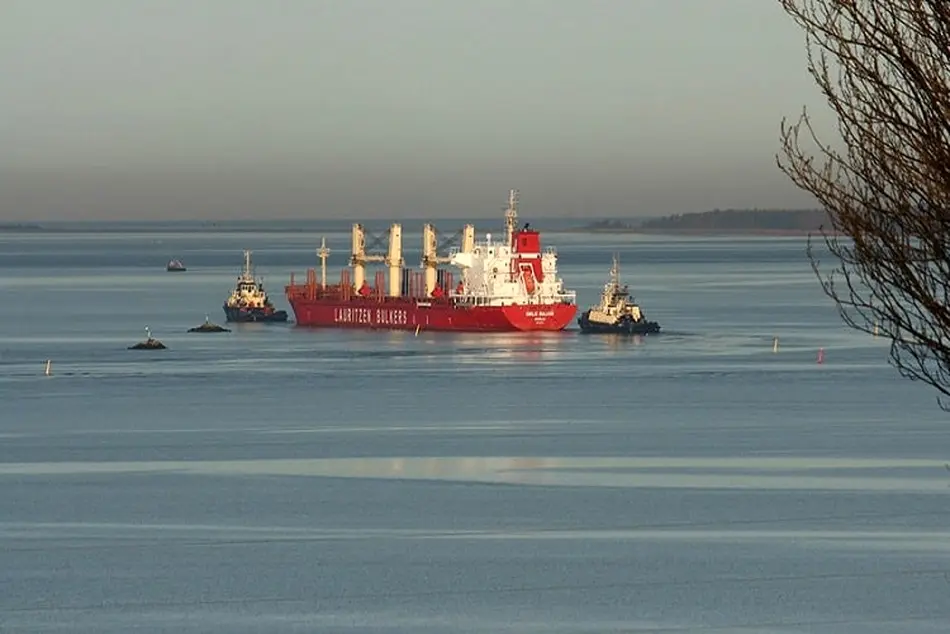WETA Reveals New Details for San Francisco's Battery Electric Ferry Builds
San Francisco’s Water Emergency Transportation Authority (WETA), operator of the San Francisco Bay Ferry system, is moving forward with plans to introduce the United States' first fleet of zero-emission, high-speed, battery electric ferries, this week unveiling design renderings and announcing a battery systems supplier.

San Francisco’s Water Emergency Transportation Authority (WETA), operator of the San Francisco Bay Ferry system, is moving forward with plans to introduce the United States' first fleet of zero-emission, high-speed, battery electric ferries, this week unveiling design renderings and announcing a battery systems supplier.
The newbuilds, to be procured as part of SF Bay Ferry's Rapid Electric Emission Free (REEF) Ferry Program, include two 400-passenger vessels that will operate on the system’s Central Bay routes and three 150-passenger vessels that will serve San Francisco’s Treasure Island and Mission Bay neighborhoods.
Commercial vessel operators are increasingly exploring battery electric propulsion as a means to slash greenhouse gas emissions from their operations. The technology, which is limited by vessel power requirements and access to shoreside charging infrastructure, is particularly well suited for ferries, which typically operate on short, repeated routes.
WETA is currently seeking bids from U.S. shipyards to construct the new ferries, the first of which is expected to enter service in 2026. Shipbuilders both inside and outside of California are expected to bid for the project.
Elliott Bay Design Group, based in Seattle, has been selected as the design and construction management firm for the larger vessels, while San Diego-based Aurora Marine Design (AMD) has designed the smaller vessels and is also consulting on the overall zero-emission system architecture.
To meet operational needs for charging technology and given the shorter trip times expected for this class of vessel, AMD's design features highly efficient propulsors that enable rapid and efficient docking, battery technology that supports rapid charging and wider, self-deploying boarding ramps. An open interior with lounge-style seating and extra-large windows allows passengers to appreciate the views available on the ferry.
“The updated design of the smaller vessels is focused on maximizing transit ridership and the rider experience,” said Seamus Murphy, SF Bay Ferry’s executive director. “That means doing everything we can to provide a service that is comfortable, convenient, frequent and fast enough to make transit the primary option for commuters and residents travelling to and from these growing neighborhoods.”
“This vessel is the product of a multi-year design effort, working closely with industry and the ferry operators to achieve the right balance of cutting-edge technology and robustness,” said Shaun Green, principal at AMD. “The 150-passenger vessel really elevates the passenger experience with a fresh, modern design that paves the way for the future SF Bay Ferry fleet.”
In late 2023, WETA tapped Finnish technology group Wärtsilä as electrification systems integrator for the REEF Ferry Program, ensuring technology and equipment used for the battery-electric vessels and infrastructure work seamlessly together.
Echandia has been selected to provide marine battery systems, and the company said it is scheduled to deliver the initial battery systems in Q2 2025. The Sweden-based recently announced the opening of a production facility in Marysville, Wash., ensuring that the new vessels are powered with American-made batteries and comply with Federal Transit Administration (FTA) Buy America requirements.
“This is a milestone achievement for our expansion into the North American market. This is so far probably the most prestigious maritime electrification project in the world to be a part of, and I think many others will look at this project as a benchmark moving forward. This really is a testament to the quality and safety of our battery systems” said Fredrik Hellström, CEO of Echandia.
“We’re proud to be working with Echandia to advance the nation’s first high-speed, high-capacity battery electric ferries in the United States,” Murphy said. “Among the many benefits of our program will be the creation of new jobs and the expansion of the US zero-emission maritime industry. By opening this new facility, Echandia is helping us realize those benefits.”
SF Bay Ferry has won $117 million in local, state and federal funding to begin work on the REEF Program, which also includes construction of a new electric charging float for the Downtown San Francisco Ferry Terminal, electrification of the Treasure Island Ferry Terminal and construction of a Mission Bay Ferry Terminal with electric vessel charging capabilities. The agency and its partners expect to begin construction on the first electric ferries and electric floats in 2024.
Future phases of the program will include additional float conversion for East Bay and San Francisco terminals, conversion of the 400-passenger Hydrus class vessels to battery electric and construction or conversion of up to 11 additional small or medium battery-electric ferries.